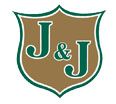The western drywood termite is a non-endemic species in Louisiana that is native to the southwestern United States. Most of the structural damage inflicted by this termite species in Louisiana occurs within New Olreans, but the western drywood termite has spread to several cities all over the state. Reproductive alates of this species swarm during the daylight hours during May and June, and occasionally in September and October. This is the most economically significant drywood termite species in the United States, and they frequently infest structural lumber, furniture and dead trees in all states where the species is found. Drywood termite infestations can only be treated by professionals, as the only effective drywood termite control methods that exist either require a license to handle specialized insecticides or extensive technical knowledge needed to operate extermination devices.
Drywood termites are very rarely seen, as colonies are located deep within natural and manufactured wood sources. Drywood termite infestations are typically more difficult to detect than subterranean termite infestations. This is because drywood termites infest structures while swarming, allowing swarmers (alates) to infest any exterior wood source on a home or building, while subterranean termites only enter homes from the ground soil where they usually leave behind mud tubes that indicate their presence in a home. Therefore, while subterranean termite infestations are usually limited to structural wood sources near a home’s foundation, drywood termite infestations can exist anywhere within a home. Drywood termite infestation often become evident when alates emerge from indoor wood sources, but drywood termite colonies often increase in size for years before swarming alates are produced. Homeowners and pest control professionals sometimes locate drywood termite feces (frass) near structural wood sources, but the presence of frass does not necessarily mean that a drywood termite infestation is currently active within a home. Walls and ceilings must be disassembled often in order to fully treat drywood termite infestations.
All drywood termite infestations are either “whole structure” or “localized” infestations. Whole structure infestations are treated by tenting and fumigation an entire structure, or by heating all structural wood within a home to a temperature of 120 degrees or more. Localized drywood termite treatments are only used in cases when pest control professionals are certain that they have located all infested areas of a home. Heat treatments, the use of microwave devices, and electric currents are sometimes used to spot-treat drywood termite infestations. The most common localized drywood termite treatments entail the drilling of holes into infested structural woods in order to inject insecticide dusts, foams and liquids, but these methods are not always effective.
Were you aware that multiple drywood termite species are active within Louisiana?
Tags: Termite Control, Termites



